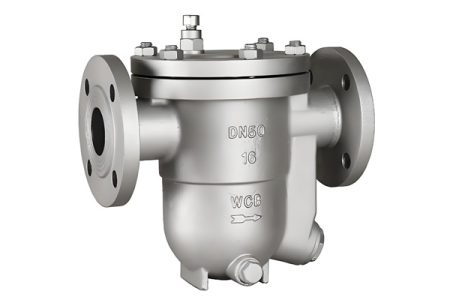
A steam trap takes out extra water and unwanted gases from your steam system. You need steam traps to help steam move well and safely. Steam gives heat, but without a steam trap, your system can have trouble. Steam traps are very important in many businesses. The steam trap market was about $3.7 billion in 2023 and is still growing. More companies want to save energy. A steam trap is not like a butterfly valve, ball valve, electric ball valve, or pneumatic ball valve. A steam trap is made to control condensate.
If you do not check steam traps, dirt can build up. You may get pressure surges, lose steam, or have water hammer. Checking steam traps often stops big problems and keeps your steam system working well.
Steam Trap Basics
What Does a Steam Trap Do
You might wonder, what does a steam trap do in your system? A steam trap removes unwanted water, called condensate, and air from your steam lines. When steam cools, it turns into condensate. If you let this build up, it can lower the quality of your steam and cause problems.
Here is what a steam trap does for your system:
- Removes condensate to keep steam dry and hot.
- Stops live steam from escaping, which saves energy.
- Prevents water hammer and erosion that can damage pipes.
- Lowers noise and keeps your plant running smoothly.
- Helps reduce emissions by keeping the system sealed.
- Improves safety by removing hazards early.
If you check and maintain your steam traps, you keep your system efficient and safe. You also avoid costly repairs and downtime.
Key Parts of a Steam Trap
A steam trap has several important parts that help it work well. Each part plays a role in removing condensate and keeping steam where you need it.
- Body: This holds all the parts together and connects to your steam line.
- Valve Mechanism: This opens and closes to let condensate out but keeps steam in.
- Float or Bucket: Some steam traps use a float or bucket that moves up and down with the level of condensate.
- Thermostatic Element: In some designs, this part senses temperature changes and controls the valve.
- Seat and Disc: These parts seal the valve when it needs to stay closed.
- Air Vent: This lets air escape from the system, which helps steam flow better.
Tip: If you know the key parts of a steam trap, you can spot problems faster and keep your steam system running longer.
Steam Trap vs. Other Valves
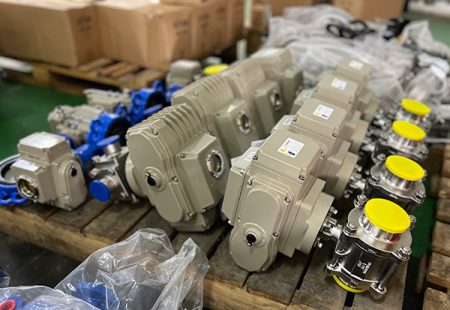
You may see many valves in a steam system, but a steam trap works differently from most. Other valves, like ball or butterfly valves, control the flow or pressure of steam. A steam trap, on the other hand, acts automatically to remove condensate and air while holding back live steam.
Here are some ways steam traps stand out:
- Steam traps discharge condensate and non-condensable gases without letting steam escape.
- They use special designs—mechanical, thermostatic, or thermodynamic—to sense the difference between steam and condensate.
- Mechanical steam traps use floats or buckets that move with condensate levels.
- Thermostatic steam traps use temperature-sensitive parts that expand or contract.
- Thermodynamic steam traps use pressure and velocity changes to open or close a disc.
Unlike regular valves, a steam trap does not need you to operate it by hand. It works on its own, using the physical properties of steam and condensate. This automatic action keeps your steam system efficient and safe.
Why Steam Traps Matter
Role in a Steam System
Steam traps help your steam system work well. They take out condensate and air but keep live steam inside. This helps your system keep the right pressure and temperature. When steam traps work, your heating or process equipment runs better.
- Steam traps open and close by themselves to let out condensate and gases.
- They keep steam in the pipes, so you do not waste energy.
- Steam traps let air out when you start the system, so it gets to the right pressure faster.
- By removing condensate, steam traps stop water from filling space meant for steam. This keeps heat moving well and stops cold spots.
You also need other tools, like strainers and check valves, to help steam traps. Checking and fixing steam traps often stops energy loss and keeps your system steady.
Problems Without Steam Traps
If you do not use steam traps or if they break, your steam system can have many issues. Condensate and air will stay in your pipes. This can cause:
- Water hammer, which is a loud noise that can break pipes and valves.
- Uneven heating, so some parts stay cold and others get too hot.
- Pressure loss, which makes your steam system weaker.
- Corrosion, because water and air together can damage metal parts.
- Steam leaks, which waste energy and cost more money.
Note: If steam traps do not work, your system can lose steam and waste fuel. This means higher bills and more repairs.
Benefits for Efficiency and Safety
Good steam traps give you many benefits. You save energy, protect your equipment, and keep your workplace safe. Here is a table that shows how steam traps help your steam system:
| Contribution Aspect | Explanation |
|---|---|
| Energy Efficiency | Steam traps take out condensate and air but keep steam, so you use less fuel. |
| Prevention of Water Hammer | By removing condensate, steam traps stop sudden pressure waves that can break pipes. |
| Corrosion Reduction | Less condensate and air means less rust and longer life for your equipment. |
| Heat Transfer Efficiency | Steady pressure and temperature keep your heating or process working well. |
| System Safety | Taking out condensate and keeping pressure balanced lowers the risk of leaks and accidents. |
When you fix or change broken steam traps, you spend less on repairs and help your boiler work less. In 2023, fixing just over 200 steam traps stopped almost 1,200 tons of CO2 from going into the air. That is like taking 240 cars off the road for a year. You also help your company reach energy and safety goals.
How Steam Traps Work
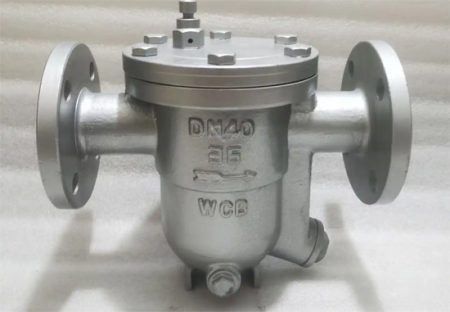
Operating Principle
You might wonder how a steam trap knows when to let something out and when to hold it back. The answer lies in the basic differences between steam and condensate. Steam is a gas, while condensate is water that forms when steam cools down. The function of steam in your system is to deliver heat. When steam gives up its heat, it turns into condensate, which you need to remove.
Steam trap mechanisms use the fact that steam and condensate have very different densities. Here is how a typical steam trap works:
- The trap has a small opening, or orifice, that lets condensate pass through but blocks live steam.
- A plug of condensate sits at the orifice. This plug stops steam from escaping and protects the trap from damage.
- Some traps, like venturi orifice traps, use a special throat shape. This shape creates back pressure that changes as the amount of condensate changes. The trap adjusts itself without any moving parts.
- Traps with no moving parts, such as the GEM steam trap, need less maintenance and rarely fail.
- When you size the trap correctly, it removes condensate all the time but keeps steam inside. This design can improve energy efficiency by 10-20% compared to older mechanical traps.
A well-designed steam trap keeps your steam system efficient and safe. It removes water and air but holds on to valuable steam.
Handling Condensate and Air
Steam traps do more than just separate steam from water. They also help your system get rid of air. Air can slow down the heating process and lower the quality of your steam. Each type of steam trap uses a different method to tell the difference between steam, condensate, and air.
- Mechanical steam traps use a float. When condensate enters, the float rises and opens a valve to let it out. When only steam or air is present, the float drops and closes the valve. Many mechanical traps also have a thermostatic part to vent air.
- Thermostatic steam traps sense temperature. They open when they detect cooler condensate or air and close when hot steam is present.
- Thermodynamic steam traps use changes in pressure and speed. When condensate flows in, the disc lifts and lets it out. When steam arrives, the disc snaps shut because the steam moves faster and creates a low-pressure area. As steam above the disc cools and turns to water, the disc lifts again.
These methods help your steam trap remove condensate and air while keeping steam where you need it. This keeps your steam system running smoothly and prevents problems like water hammer or uneven heating.
Common Misconceptions
Many people have the wrong idea about how steam traps work. You might hear some of these myths:
- “All steam traps lose steam.” In reality, a properly sized and maintained steam trap does not let live steam escape. It only removes condensate and air.
- “Steam traps need lots of maintenance.” Some modern traps have no moving parts and can last for years with little attention.
- “One type of steam trap fits every job.” Different systems need different traps. You should always choose the right trap for your steam system.
- “If a trap is hot, it must be leaking steam.” A hot trap often means it is working well, as it is removing hot condensate.
Tip: If you understand how your steam trap works, you can spot problems early and keep your system safe and efficient.
Types of Steam Traps
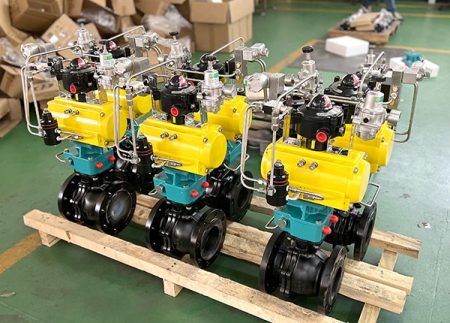
Mechanical Steam Traps
Mechanical steam traps work by using the weight difference between steam and condensate. There are two main types in this group: float and thermostatic steam traps, and inverted bucket type steam traps. These traps have moving parts inside. They sense when water builds up and then let it out. They keep steam inside and only let out water and air.
Here is a table to show how each type works:
| Type | Operating Principle | How It Removes Condensate |
|---|---|---|
| Float and Thermostatic | A ball float goes up with water, opening the orifice to let it out. When the water is gone, the float drops and closes the orifice. | The float rises as water comes in, opening a valve. When the water leaves, the float drops and the valve shuts. |
| Inverted Bucket | Steam makes an upside-down bucket float, closing the orifice. When water fills up, the bucket sinks and opens the orifice to let water out. | The bucket floats when steam is there, blocking the exit. As water fills, the bucket sinks and opens the valve to drain. |
Float and Thermostatic
Float and thermostatic steam traps have a ball float inside. When water enters, the float rises. This opens a valve and lets the water out. When the water leaves, the float drops and the valve closes. This design is good for systems that need steady water removal. You often see these traps in heating systems or equipment that needs a constant steam flow.
- The float moves smoothly with the water, so it works well.
- The thermostatic part lets air out at startup, so your system heats up faster.
- These traps can handle lots of water and work even if steam pressure changes.
Tip: Float and thermostatic steam traps are strong and last a long time. You can use them in steam jacketing systems that need steady heat.
Inverted Bucket
Inverted bucket steam traps have a small bucket that floats upside down inside. When steam enters, it fills the bucket and makes it float. This closes the valve and keeps steam inside. As water builds up, the bucket gets heavy and sinks. This opens the valve and lets the water out. When the bucket empties, it floats again and closes the valve.
- You can use inverted bucket traps in many steam systems, especially where you get sudden bursts of water.
- These traps are simple and work well, but you must keep them filled with water to work right.
- They can handle dirt and debris better than some other types, but water hammer can break them if not installed right.
Note: Inverted bucket steam traps need regular checks to make sure they stay filled with water. If they lose their water seal, steam can leak out.
Mechanical steam traps give strong and reliable service. They work well in many steam jobs, but each type has its own good and bad points. You should pick the right trap for your system to keep it safe and working well.
Applications by Type
You need to choose the right steam trap for your system. Each type works best in certain places. If you match the trap to the job, your steam system will run better and last longer.
Here is a table to help you see where each type of steam trap fits best:
| Steam Trap Type | Common Applications | Why It Works Well There |
|---|---|---|
| Float & Thermostatic | Heating coils, heat exchangers, unit heaters | Handles steady loads and removes air quickly |
| Inverted Bucket | Main steam lines, process equipment | Deals with dirt and sudden bursts of condensate |
| Bimetallic | Tracing lines, outdoor piping | Works in high temperatures and tough conditions |
| Balanced Pressure | Sterilizers, hospital equipment | Responds fast to temperature changes |
| Disc | Small steam lines, remote locations | Simple, compact, and easy to install |
| Impulse & Labyrinth | High-pressure systems, power plants | Handles high pressure and needs little upkeep |
You can use this table to pick the right trap for your needs. For example, if you have a heating coil, a float and thermostatic trap will work well. If you need to protect a long outdoor pipe, a bimetallic trap can handle the cold and keep working.
- Float and thermostatic traps work best where you need steady removal of water, like in heat exchangers.
- Inverted bucket traps fit places with dirt or where water comes in bursts, such as process equipment.
- Bimetallic traps suit tracing lines that run outside or in places with high heat.
- Balanced pressure traps help in hospitals or labs where you need fast air removal.
- Disc traps fit small pipes or spots that are hard to reach.
- Impulse and labyrinth traps work in power plants or places with very high steam pressure.
Tip: Always check the steam pressure, temperature, and how much water you need to remove before you pick a steam trap. The right choice saves energy and keeps your system safe.
You should also think about how easy it is to check and fix the trap. Some traps, like disc types, are small and easy to swap out. Others, like float and thermostatic traps, last longer but may need more space.
If you use the right steam trap for each job, you will see fewer problems. Your system will use less energy, and you will spend less on repairs. Picking the right trap helps you get the most from your steam system every day.
Steam Trap Selection

Choosing the Right Trap
You need to pick the right steam trap for your system. Start by thinking about what your equipment needs. Some traps work better for steady loads, while others handle sudden bursts of water. Look at the type of steam you use and the pressure in your pipes. If you use high-pressure steam, you may need a different trap than if you use low-pressure steam.
Ask yourself these questions:
- What kind of equipment do you have?
- Does your system run all the time or only sometimes?
- How much condensate do you expect?
- What is the steam pressure and temperature?
Tip: Always match the trap type to your application. For example, use a float and thermostatic trap for steady heating, or a disc trap for small, remote lines.
Sizing and Specification
Proper sizing and specification keep your steam system efficient and reliable. If you size a trap wrong, you can get water buildup or lose steam. Both problems hurt your system.
Here are the key steps for sizing and specifying a steam trap:
- Focus on the internal orifice size, not just the pipe connection.
- Gather accurate data: maximum steam pressure, operating pressure, return line pressure, condensing rate, startup load, and how often you use the equipment.
- Make sure the trap can handle the highest flow of condensate, even during startup.
- Match the piping size to the process outlet to avoid flow problems and backpressure.
- Watch for backpressure from small pipes or changes in pipe height. This can lower system efficiency.
- Use a sizing factor, usually between 2:1 and 4:1, to cover heavy loads or startup.
- Understand how your system works and collect good data before you choose a trap.
If you follow these steps, you help your steam system run smoothly and avoid costly problems.
Common Selection Mistakes
Many people make mistakes when choosing a steam trap. These errors can cause big problems in your steam system.
- Wrong installation: Skipping strainers or insulation can make traps wear out fast.
- Incorrect sizing: Only looking at normal operation and ignoring startup loads leads to early failure.
- Using the wrong trap type: Picking the wrong kind for your job means poor performance and a short lifespan.
These mistakes can lead to:
- More energy loss
- Lower productivity
- Early trap failure
- Higher repair costs
- Corrosion from dirty water
- Water hammer from pressure surges
- More money spent on operations
Note: Check your traps often and use quality parts. Good maintenance helps you avoid these problems and keeps your steam system safe.
Steam Trap Installation and Maintenance
Installation Tips
You want your steam trap to work well and last long. How you install it is very important. Put steam traps at the lowest spots in your system. This helps collect water where it gathers most. Always tilt your steam pipes down in the direction steam moves. A small slope, like 1:100, lets water flow to the trap. Use special pipe fittings called eccentric reducers. These stop water from getting stuck in the pipes.
Here are some good ways to install steam traps:
- Put traps along long steam pipes at set spaces.
- Place traps near machines that make water, like heat exchangers.
- Cover pipes and traps with insulation to keep heat inside.
- Keep high and low-pressure water returns apart to protect your system.
- Put strainers before the trap to catch dirt.
Tip: If you install your steam trap the right way, it will work better and last longer. It also makes fixing it easier later.
Inspection and Testing
Checking your steam trap often keeps your system safe and working well. You should look at your traps on a regular plan. Some systems need checks every day. Others can wait weeks or months. Look for leaks, rust, or broken parts. Use your eyes and ears to check for problems.
A simple table can help you plan when to check your traps:
| Inspection Task | How Often | What to Look For |
|---|---|---|
| Visual check | Weekly/Monthly | Leaks, rust, or damage |
| Listen for water hammer | Weekly | Loud bangs or rattling sounds |
| Test trap discharge | Monthly/Quarterly | Steady water flow, no steam loss |
| Check insulation | Annually | Missing or damaged insulation |
You can test traps by listening with special tools, checking the temperature, or watching the water come out. If you find a problem, fix it right away. Change old traps every 3-4 years so they do not break.
Troubleshooting Issues
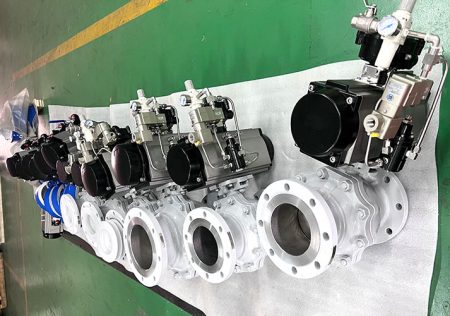
Sometimes your steam trap will have problems. Common problems are dirt, rust, or using the wrong size trap. Bad water or gases can make the water sour and hurt the trap. Traps that are too big work too much and waste steam.
Look for these warning signs:
- The boiler room feels hotter than normal.
- Steam comes out of water pipes.
- Pipes make loud banging sounds.
- Boiler pressure is hard to keep steady.
- You see steam in the water return pipes.
- Your energy bill goes up for no clear reason.
To fix problems:
- Clean the trap and change any broken parts.
- Check for dirt blocking the valve.
- Make sure the trap is the right size for your system.
- Use strainers to stop dirt from getting in.
- Teach your team how to find and test for problems.
Note: If you check your steam traps often and take care of them, you can find problems early and keep your system working well.
Repair or Replace
You may wonder if you should repair your steam trap or replace it. This choice can affect your steam system’s performance and your budget. You need to look for signs that show your steam trap is not working well. Some signs include leaking steam, water hammer, or slow heating. If you see these problems, you should act quickly.
Start by checking the age of your steam trap. Most steam traps last about three to five years. If your trap is older, it may be time to replace it. Newer traps often work better and save more energy. If your trap is still young, you might fix it instead.
Here is a simple way to decide:
| Condition | What You Should Do |
|---|---|
| Minor leak or blockage | Try to repair the trap |
| Broken parts or corrosion | Replace the trap |
| Trap is very old | Replace the trap |
| Trap fails often | Replace the trap |
| Trap is hard to access | Replace with a better model |
You can repair some steam traps by cleaning or changing small parts. For example, you can clean the valve seat or replace a worn float. If you see rust or cracks, you should replace the whole trap. Sometimes, repairs cost almost as much as a new trap. In these cases, replacement makes more sense.
Tip: Always keep spare parts for common repairs. This helps you fix problems fast and avoid long downtime.
You should also think about the cost of lost steam. A broken trap can waste a lot of energy. If you replace a bad trap, you often save money in the long run. New traps also need less maintenance and work more reliably.
When you plan your maintenance, set a schedule to check and test your traps. Write down when you repair or replace each trap. This record helps you spot patterns and plan for future needs.
If you are not sure what to do, ask an expert. A steam system professional can help you choose the best option. They can also suggest new trap models that fit your system better.
Remember: Quick action keeps your steam system safe and efficient. Repair small problems right away. Replace traps that fail often or show major damage.
Impact on Steam System Performance
Energy Efficiency
You want your steam system to use energy wisely. Steam traps help you do this by stopping steam from leaking out and only letting out water and air. When you keep steam inside the pipes, your boiler does not have to work as hard. This saves fuel and lowers your energy bills. If you have a small leak in a steam trap, you could lose thousands of dollars each year. When many traps fail, your costs go up even more.
A working steam trap can cut fuel use and reduce energy waste. Some plants have saved up to 20-30% on energy by keeping their steam traps in good shape. This means you use less fuel and help the environment by lowering emissions. You also meet energy rules and keep your plant running smoothly.
Safety and Reliability
Steam traps keep your steam system safe and reliable. When you remove water and air from the pipes, you stop problems like water hammer and pipe bursts. Water hammer makes loud bangs and can break pipes or hurt people. Good steam traps also stop corrosion, which keeps your pipes strong for longer.
Here is a table that shows how steam traps help your system:
| Impact Aspect | Explanation |
|---|---|
| Energy Efficiency | Stops steam loss, lowers fuel costs, and saves energy. |
| System Reliability | Removes water and air, prevents leaks, and keeps your system running longer. |
| Safety | Stops water hammer and pipe bursts, lowers risk of injury. |
| Maintenance Costs | Reduces pipe wear, saves money on repairs. |
| Environmental Impact | Cuts fuel use and emissions, helps you meet green goals. |
| Plant Performance | Keeps steam flowing, avoids slowdowns and damage. |
| Uptime | Keeps boilers online, reduces downtime. |
If you do not check your steam traps, up to 30% of them can fail at any time. This can cause leaks, water hammer, and even accidents. In one case, a clogged steam trap led to a big explosion in New York City, causing injuries and damage. You can avoid these risks by checking and fixing your traps often.
Tip: Regular checks keep your steam system safe and help you avoid costly breakdowns.
Cost and Sustainability
Steam traps help you save money and protect the planet. When you keep your steam system in good shape, you spend less on repairs and fuel. You also avoid big losses from leaks. A single leaking trap can cost over €6,000 each year. If you fix or replace bad traps, you lower your bills and keep your plant running.
Steam traps also help you meet sustainability goals. By using less fuel, you cut down on carbon emissions. Good maintenance can lower CO? emissions by up to 10%. This helps your company follow energy laws and show you care about the environment.
You can see the benefits in your daily work:
- Lower energy bills
- Fewer repairs
- Less downtime
- Safer workplace
- Cleaner environment
Remember: Taking care of your steam traps is good for your wallet and the world.
Industry Applications of Steam Traps

Power Generation
Steam traps in turbines and heat exchangers
Power plants use steam to run turbines and heat exchangers. Steam traps are important in these systems. They take out water and gases that should not be there. This helps your machines work better and last longer. Steam traps stop water hammer and rust in turbines. This means you do not have to fix things as often.
- Steam traps keep steam inside, so you save energy.
- They help heat exchangers keep the right pressure and temperature.
- You get better heat transfer, so power plants work better.
Using the right steam traps helps turbines and heat exchangers work well. This means fewer breakdowns and longer life for your equipment.
Ensuring efficient condensate removal in power plants
Getting rid of water is very important in steam systems. If water stays, it can hurt your machines and waste energy. Steam traps remove water as soon as it forms.
Here is how steam traps help your power plant:
- They stop steam from leaking, so more energy makes electricity.
- They lower the chance of water hammer, which can break pipes.
- Your machines stay cleaner and drier, so you pay less for repairs.
- You can use different steam traps for high-pressure pipes and other jobs.
A chemical plant used steam traps with monitors and cut downtime in half. This shows how steam traps help plants run better and save money.
Petrochemical and Oil Refining
Maintaining process reliability in refineries
Refineries need steam to work right. Steam traps keep the system steady by taking out water and gases. Some steam traps, like venturi orifice types, have no moving parts. These last longer and need less fixing.
- Checking your steam traps often helps you find problems early.
- Special tools, like ultrasonic detectors, help you spot broken traps fast.
- Teaching your team about steam systems keeps things safe and running well.
One refinery put in over 1,000 venturi orifice steam traps. When the plant shut down by accident, steam pressure stayed steady. This stopped losses and saved money.
Preventing steam loss in high-pressure systems
High-pressure steam systems need extra care. If you lose steam, you waste energy and might break equipment. Some steam traps, like GEM venturi orifice types, are made for these jobs.
- GEM venturi orifice steam traps take out water but keep steam in.
- These traps work with changing loads and do not clog easily.
- They are over 10% more efficient than new mechanical traps.
If you pick the right steam traps and take care of them, you stop steam loss and keep your refinery safe.
Food and Beverage Processing
Ensuring sanitary steam for cooking and sterilization
Food and drink must be safe and clean. Sanitary steam traps help by taking out all water and not letting steam leak. This stops germs and keeps the right temperature.
- Sanitary steam traps meet rules like 3-A and FDA.
- They help with cleaning and sterilizing to lower bacteria risks.
- You keep your food quality high and avoid recalls.
Checking and caring for steam traps keeps your steam system clean and working well.
Improving energy efficiency in production lines
Energy costs are important in food and drink plants. Steam traps help save energy by stopping steam leaks and adjusting to changes. Smart steam traps make it easy to find and fix problems before they waste energy.
- Self-regulating traps help heat move better and use less fuel.
- Automated checks lower downtime and cut carbon emissions.
- One brewery saved over 5 million gallons of water and almost 306,000 therms of energy each year by keeping its steam traps in good shape.
You can save a lot of money and help the planet if you keep your steam system working well.
Pharmaceutical Manufacturing
Supporting clean steam systems for product safety
You need clean steam in pharmaceutical manufacturing to protect your products. Steam traps help you keep steam lines free from water and air. This is important because even a small amount of water can cause contamination. You use steam traps to remove condensate quickly. This keeps your steam pure and safe for use in sterilization and production. Clean steam systems rely on steam traps to meet strict health and safety standards. If you use the right steam trap, you lower the risk of bacteria and other harmful particles in your process.
Maintaining precise temperature control
You must control temperature carefully in pharmaceutical plants. Steam traps help you do this by removing water from steam lines. When you keep steam dry, your equipment heats up evenly. This helps you avoid hot or cold spots in your process. Good steam traps also help you reach the right temperature faster. This saves you time and energy. If you check your steam traps often, you keep your system running smoothly and avoid costly mistakes.
Pulp and Paper Industry
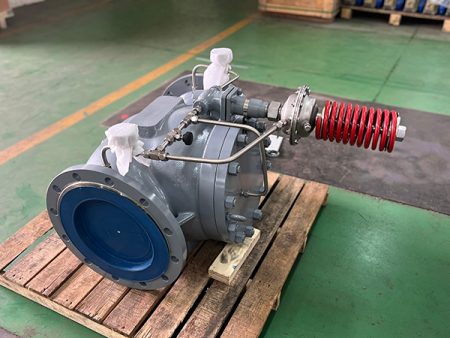
Optimizing drying processes in paper machines
You use a lot of steam to dry paper in pulp and paper mills. Steam traps play a big role in this process. They remove water from steam lines, so your dryers work better. Some steam traps, like GEM? steam traps, help you cut steam costs by 10% to 20%. These traps have no moving parts, so you do not need to fix them often. This makes your drying process more reliable and efficient.
Reducing downtime and maintenance costs
Steam traps can help you lower your maintenance costs. GEM? steam traps come with a ten-year ‘no fail’ warranty. They use a venturi orifice design that stops water hammer, which can damage your pipes. You spend less time fixing broken traps and more time making paper. When you reduce trap failures, your plant runs longer without stopping. This means you get more output and save money on repairs.
Tip: Reliable steam traps help you avoid costly downtime and keep your production on track.
Other Industrial Applications
Textiles, HVAC, and chemical processing
You find steam traps in many industries. Textile and paper manufacturing use steam traps to keep machines running well. HVAC systems use them for steam heating. Chemical and petrochemical plants rely on steam traps to control temperature and remove water from their processes.
Custom solutions for unique steam system needs
Every industry has its own steam system needs. You may need a special steam trap for a unique process or harsh environment. Custom steam trap solutions help you solve problems like high pressure, dirty steam, or hard-to-reach locations. When you choose the right steam trap for your job, you improve safety, save energy, and protect your equipment.
Steam traps help you keep your steam system safe and efficient. You need to choose the right trap, install it correctly, and check it often. Regular maintenance stops problems before they start. Upgrading old traps saves energy and money.
- Pick the best trap for your system
- Inspect and test traps on a schedule
- Replace or repair traps when needed
For complex steam systems, talk to a steam expert. You get better results and avoid costly mistakes.
FAQ
What happens if you do not maintain your steam traps?
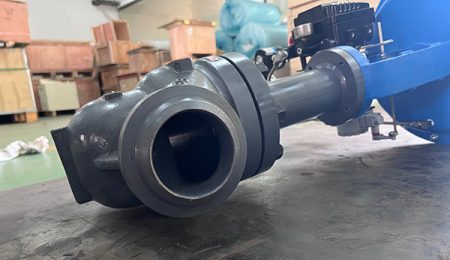
You risk leaks, water hammer, and higher energy bills. Your system may lose efficiency. Equipment can break down more often. Regular checks help you avoid these problems.
How often should you check steam traps?
You should inspect steam traps at least once a year. High-use systems may need checks every few months. Early detection of issues saves money and prevents downtime.
Can you use any steam trap in any system?
No, you need to match the steam trap to your system’s pressure, temperature, and condensate load. Using the wrong type can cause failures or energy loss.
How do you know if a steam trap is working?
You can listen for unusual sounds, check for leaks, or use a temperature gun. Some traps have test points. If you see steam where only water should exit, the trap may fail.
What causes steam trap failure?
Dirt, corrosion, and worn parts cause most failures. Oversized or undersized traps also fail early. Poor installation or lack of maintenance increases the risk.
Do steam traps save money?
Yes! Working steam traps stop steam loss and reduce fuel use. You spend less on repairs and energy. Many companies save thousands each year by keeping traps in good shape.
Can you repair a steam trap, or must you replace it?
You can repair minor issues like blockages or worn parts. If the trap is old, corroded, or fails often, replacement works better. Always weigh repair costs against the price of a new trap.
Are there signs you need to replace your steam trap?
Look for frequent leaks, loud banging, or slow heating. If your trap is over five years old or fails tests, replacement is a smart choice.
